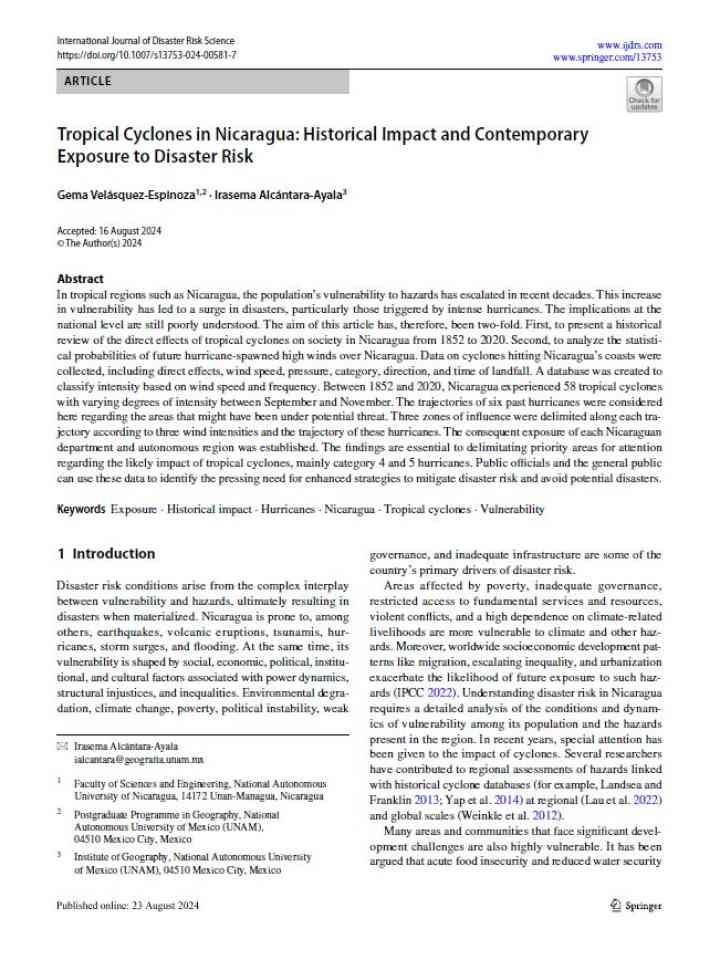Tropical cyclones in Nicaragua: Historical impact and contemporary exposure to disaster risk
The article presents a historical review of the direct effects of tropical cyclones on society in Nicaragua from 1852 to 2020 and analyzes the statistical probabilities of future hurricane-spawned high winds over Nicaragua. Data on cyclones hitting Nicaragua’s coasts were collected, including direct effects, wind speed, pressure, category, direction, and time of landfall. A database was created to classify intensity based on wind speed and frequency.
Between 1852 and 2020, Nicaragua experienced 58 tropical cyclones with varying degrees of intensity between September and November. The trajectories of six past hurricanes were considered here regarding the areas that might have been under potential threat. Three zones of influence were delimited along each trajectory according to three wind intensities and the trajectory of these hurricanes. The consequent exposure of each Nicaraguan department and autonomous region was established. The findings are essential to delimitating priority areas for attention regarding the likely impact of tropical cyclones, mainly category 4 and 5 hurricanes. Public officials and the general public can use these data to identify the pressing need for enhanced strategies to mitigate disaster risk and avoid potential disasters.
Explore further
